
BY


BY
JANUARY 2024



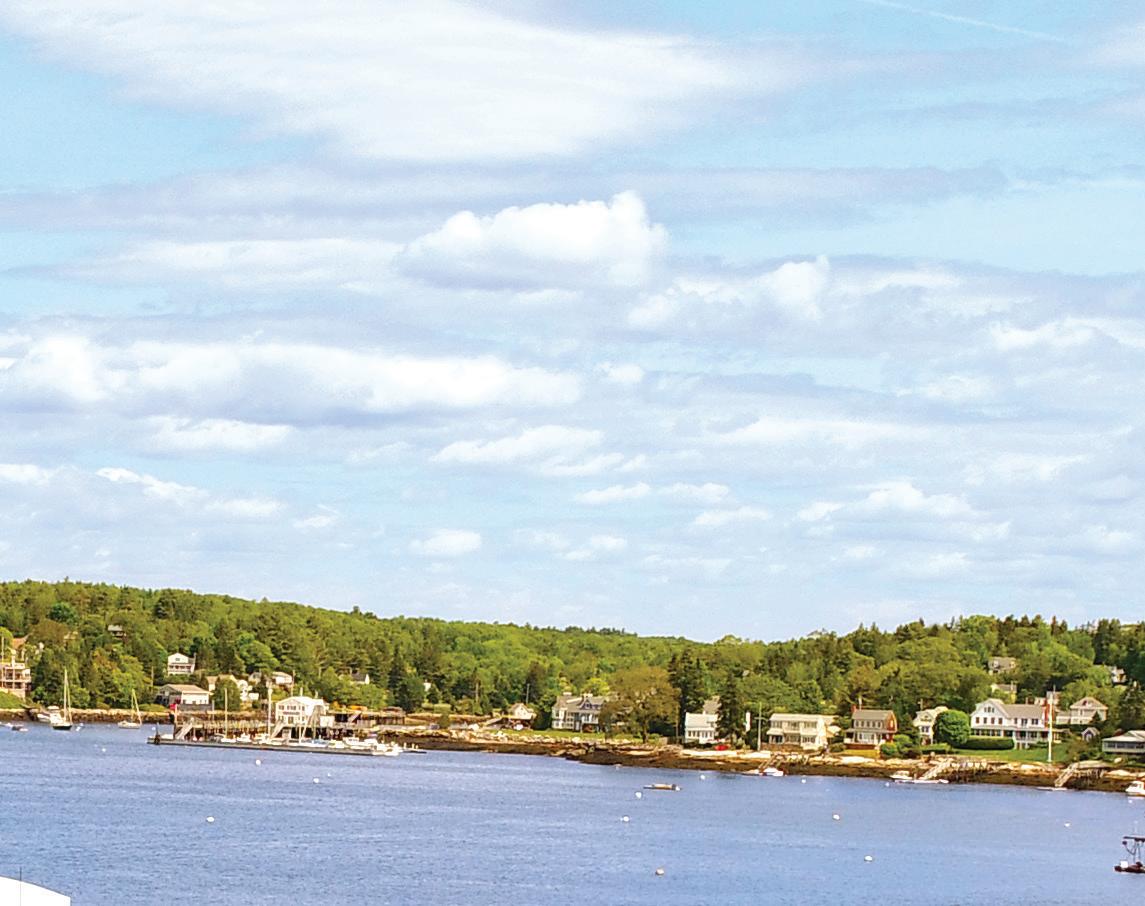

From the rich maritime heritage of whaling towns to quaint island villages and grand seaside mansions of the Gilded Age, our small, comfortable ships can take you to the heart of New England’s most treasured destinations. Be welcomed back to your home away from home, where you can delight in the warm camaraderie of fellow guests and crew.




























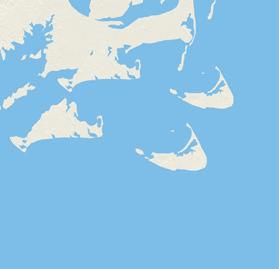











January 2024 • Volume 72, No. 1
CEO Michael Shepard
SENIOR VP OF CONTENT Leon Espinoza
EDITORIAL DIRECTOR Mike Teegarden, CCC
DEPUTY EDITORIAL DIRECTOR Noble
Sprayberry
SENIOR EDITOR Jennifer Paton, CCC
ASSISTANT EDITORS Chasity Anderson, CCC; Victoria Hampton, CCC, David Herder CCC
ASSOCIATE EDITORS
Valeri Pearon, Nina Todea
PUBLICATIONS PRODUCTION MANAGER
Elizabeth Beatty
PUBLICATIONS COORDINATOR
Alyssa McDougle
Ruralite (USPS 397-460) is published monthly for members for $4.83 per year, plus postage, by Pioneer Utility Resources Inc., 5625 NE Elam Young Pkwy. Ste. 100, Hillsboro, OR 97124—a not-for-profit Oregon cooperative corporation—to serve the communication needs of 47 consumer-owned electric utilities in Oregon, Washington, Alaska, Idaho, Nevada and California. Preferred periodical postage paid at Hillsboro, Oregon, 97123 and additional mailing offices. © 2024 Pioneer Utility Resources. All rights reserved. Reproduction in whole or in part without written permission is prohibited.
Postmaster: Send address changes to Ruralite, 5625 NE Elam Young Pkwy. Ste. 100, Hillsboro, OR 97124-6454
HOW TO CONTACT RURALITE
Subscription services:
Nonmember subscriptions $15 (U.S.) per year; $25 per year (foreign). Prepayment required. Allow 4-8 weeks for first issue. Be sure to identify which local edition you want to receive.
Address Changes:
Utility members, contact your local utility. Subscribers, call us at 503-357-2105 option 3 or email mailingdept@pioneer.coop.
Back issues:
Back issues and extra copies $3. Prepayment required. Supply is limited. Be sure to identify edition, month and year. Call first if ordering back issues to check availability.
To contact Ruralite: Ruralite magazine is published by Pioneer Utility Resources.
P.O. Box 1306, North Plains, OR 97133-1306; 503-357-2105; email: info@pioneer.coop. For more information, visit www.pioneer.coop.
DISPLAY ADVERTISING INQUIRIES
American MainStreet Publications
611 S. Congress Ave., Ste. 504 Austin, TX 78704
800-626-1181 or 512-441-5200

For supplemental and interactive content, search @Ruralite on your favorite social media sites.
Welcome to the new year. I hope you enjoyed quality family time during the holidays while also staying safe and warm. Throughout the year, I hear from many of you via emails and phone calls. Most are positive comments or questions about our content. One reader last month shared that he found our magazine “weirdly engaging,” saying he just can’t put down the magazine. We’re considering adopting the phrase as our new motto!

A few readers felt our November coverage of the Honor Flight program slighted our Korean War veterans, even suggesting there was a bias against those brave soldiers. It saddens me when readers feel as if we don’t care about them. We value each and every member of our military branches, regardless of when or where they served.
We kick off 2024 with a story about a group that wants to return sea otters to the Oregon

Coast. These critters are a critical piece of the ecological puzzle, providing predator balance to the eccosystem.
Because no sea otters exist on the Oregon Coast, we chose to illustrate the story with an AI-generated image. This marks the first time we have used this type of illustration as the lead art for a story. Please note that we clearly labeled the image as an AI illustration. On those rare occasions we find this type of illustration to be the best option, we will be transparent about its use.
Our Up Close feature highlights STEM programs in rural communities and how they connect with industries such as farming and manufacturing. Some high school students are gaining valuable work experience as interns, taking what they learn in school and putting it into practice in the workplace.
As always, thank you for taking the time to read our work. Happy New Year!
Sincerely,
Mike Teegarden Editorial Director
STEM education forges new paths for students in rural communities Up Close, Page 10
Elakha Alliance is on a quest to restore sea otters to the Oregon Coast Spotlight, Page 12 Plugged In 6 In the Kitchen 16
22
Go 30 Utility Pages: 4-5, 8, 25, 28-29, 32

Lassen MUD’s core function is providing customers with safe, reliable, affordable and environmentally responsible electricity.
Maintaining 1,900 miles of energized line is a big task, but one the employees take pride in.
LMUD’s line crews execute a year-round work plan geared toward patrolling, maintaining and upgrading equipment to improve reliability and quality of service and avoid outages before they happen.
But when Mother Nature strikes, it is impossible to avoid outages altogether. The least convenient times to be without power, such as during extreme weather, are often the most common times for something to go wrong.
Despite LMUD’s best efforts, high winds, snow, ice and lightning can all wreak havoc on equipment and cause power outages.
Even with crews working around the clock, winter weather conditions can make repairs difficult, time-consuming and dangerous. Because of this, LMUD wants customers to be prepared in the case of a winter outage.
If your power goes out, never assume someone else has reported it. Please call LMUD’s 24-hour customer service line at 530-257-4174.
Winter weather can create multiple issues that need to be addressed. The more information LMUD line crews have, the better they can identify and respond to an outage.
LMUD provides updates on its outage map at lmud.org, through text alerts at 877-754-7697 and our Facebook page. To enroll in text alerts, text LMUD to 877-754-7697.
While there is never a convenient time to be without power, it does help to have a plan for when extreme weather causes an outage. To help customers get started, LMUD has included a winter storm preparedness checklist on the opposite page.
Rest assured that if an outage occurs, LMUD crews will restore power as quickly and safely as possible. n


Our mission is to provide customers with reliable service day and night, but severe weather can cause a power outage lasting for hours or days. Snow, ice, high winds and lightning can seriously damage electrical equipment. Here is a list of suggestions that can help you during an outage.
Battery
Flashlights
Batteries
First aid kit
Prescription medications
Extra winter clothing
Extra blankets
Basic toiletries
Extra cash
Waterproof matches
Rock salt/sand

Bottled water (1 gallon per person per day for 7 days)
Nonperishable foods (7-day supply)
Pet food
Infant formula
Paper cups, plates and utensils
Can opener
Portable camp stove
Snow shovel
Firewood
Backup power generator
Games (playing cards, board games, etc.)
Check your electrical panel. Try to reset the breakers.
LMUD to report an outage. Unplug any voltage-sensitive equipment. Install surge protectors.
Keep
Switch on an outside light.
This
Listen to radio reports for updates.
By David Herder

We can all think of improvements we would like to make in the new year, whether it is eating healthier, volunteering more or lowering our expenses. One way to spend less in the new year and for many more to come is to make household energy efficiency a goal.
Making small changes to your routine can add up to significant savings. But do you know what adds up faster than small things? Big things.
If you’re willing to make the initial investment, resolve to go big by taking on one of these projects.
For most houses, heating and cooling air makes up the largest chunk of energy use. If you’re paying to heat or cool the air, you want to keep it inside your house.
Common spots to insulate are attics, walls, floors and anywhere your house contacts the outside. Just like you want a jacket between you and a snowstorm, you want insulation between your home and the outdoors.
Insulation is rated in R-values. Suggested insulation R-values are between R-30 and R-60, depending on your region and climate. In many cases, it is a good idea to get professional insulation help.
Air sealing is another step to prevent drafts by physically closing gaps and cracks. In some cases, this can be as simple as adding caulking or weatherstripping to places where you notice drafts. Contractors and some utilities can do a home blower test to find and seal leaks.
If you’re considering doing some air sealing on your own, the Department of Energy offers tips at www.energy.gov/energysaver/air-sealing-your-home.
What are windows but walls you can see through? Like outer walls, they touch the outdoors, and unlike many walls, they aren’t filled with thick insulation. Heat gain and loss through windows account for 25% to 30% of residential heating and cooling costs, according to the Department of Energy.
Energy Star windows typically have high U-factors, a measurement of how well they insulate. Get multiple quotes for any home improvement project, including windows, and be on the lookout for rebates from utilities, state programs and the federal government.
If you aren’t buying new windows right away, consider steppingstones such as adding weatherstripping, caulking gaps and using thermal drapes.
Just like you don’t want your heated and cooled air to leak outdoors, you don’t want your air leaking into parts of the house where you never go.
If you have ductwork in an attic, crawlspace or other unairconditioned or heated area, the ducts could have leaks that increase your energy bill. According to the Department of Energy, 20% to 30% of the air moved through ducts is lost to leakage.
Hire a professional to seal your ducts, or seal them yourself with metal tape or duct mastic specifically designed for the job. Do not use duct tape, which will dry out and lose adhesion.
So far, we’ve covered three ways to keep your heated and cooled air where you want it. It turns out, how you heat or cool the air is also important.
If you’re willing to replace your furnace, or the unit is 10-plus years old, a heat pump is an efficient home heating and cooling upgrade. It can reduce heating costs by as much as 50% compared to electric resistance heating, according to the Department of Energy.
A heat pump works similarly to an air conditioner in reverse. It uses a refrigerant to pull heat energy out of the air outdoors, then moves it indoors and blows the heat into your living areas.
Also consider a heat pump water heater, which has all the same advantages but heats water rather than air.
If a heater turns on, but nobody is there to hear it, does it make a noise? One thing we know is that it would impact your energy bill.

Before starting a project, it is important to take a step back and consider, “What will make the biggest impact?” This means knowing how efficient your house is and where the energy use is going.
A home energy assessment looks for air leaks, insufficient insulation, energy-hog appliances or other issues, and evaluates your total energy use. Conducting a home energy assessment lets you know where any inefficiencies in your house are, giving you a blueprint for fixing them.
Many utilities offer assessment programs, and the Department of Energy offers guides on assessments— including tips for a do-it-yourself assessment—at www.energy.gov/energysaver/home-energy-assessments.
Both programmable and smart thermostats help people save energy by changing the temperature throughout the day. You can save 10% on energy bills by turning back the thermostat 10% to 15% for eight hours a day, according to the Department of Energy.
Whether that means heating or cooling less during the day while you’re at work or turning things down while you’re sleeping, a programmable thermostat ensures you’re only heating and cooling the air you feel. n

Lassen Municipal Utility District is committed to helping customers who may need a little extra help when it comes to their utility bills. The goal is to ensure no one goes without the power they need.
LMUD’s Winter Energy Assistance Rate helps income-qualified customers who may have difficulty paying their utility bills.
WEAR helps with energy used October through April, when bills can be higher than normal. Customers who qualify for the program receive a 50% discount on the first 1,500 kilowatt-hours used per month.
The application process for WEAR is simple and can be completed in just a few minutes. Applications are accepted beginning October 2. The WEAR application and income guidelines are at lmud.org. You can also fill out the application online and upload your supporting documents.
If you or someone you know qualifies for WEAR, contact the LMUD office at 530-257-4174. In addition to the LMUD
website, applications are available at the LMUD office and Lassen Economic Development Corp. in Westwood. You may also request an application be mailed to you.
Once LMUD staff receives a completed application, they review the information, and the application is either accepted or denied and sent back to the applicant. If the application is rejected due to missing or incomplete information, it may be resubmitted after the corrections are made. If your application is accepted, you will not receive an acceptance letter. You may give us a call to confirm, or look for the credit applied to your next bill. n
WEAR offers 50% discount on the first 1500 kilowatt-hours per month from November through April for Cycle 02 billing dates and December through May statements for Cycle 01. Maximum assistance is $142.50.
This program is subject to change as necessary by LMUD. Funding for this program is not to exceed the amounts allocated by the 2023/24 board-approved budget. Decisions regarding application approvals or denials are final.
BY KISHIVAN
How can rechargeable hearing aids that t inside your ear costs only $297 and be every bit as good as those that sell for $4,800 or more?
The answer: The MDHearing™ NEO uses the same kind of technology incorporated into hearing aids that cost thousands more at a small fraction of the price. Satis ed MDHearing customers agree: High-quality, digital, FDA-registered rechargeable hearing aids don’t have to cost a fortune. NEO is a medical-grade, digital, rechargeable hearing aid offering sophistication and high performance; and works right out of the box with no time consuming “adjustment” appointments. You can contact a licensed hearing specialist conveniently online or by phone — even after your purchase at no cost. No other company provides such extensive support. Now that you know... why pay more? PLUS... It fits inside your ear.








































By Chiara Profenna
Soaring above a golden expanse of wheat, drones whiz through the air, not just counting crops but playing a pivotal role in detecting disease and sowing the seeds of tomorrow’s harvest.
In the heart of rural America, a technological revolution continues. A new future of machinery, automation and cutting-edge technology is touching down in our communities.
As our world undergoes this transformation, there is a pressing need for a workforce equipped to navigate this new frontier. Enter STEM education, where science, technology, engineering and math are the soil in which the next generation matures to take over this ever-changing landscape.
As the needs of the workforce evolve, education practices are shifting to meet the latest demands. The most recent is a surge in STEM careers in rural areas. According to the U.S. Bureau of Labor Statistics, STEM
occupations grew 79% in the past 30 years. Rural communities feel this change more than most, according to STEM professionals across the Pacific Northwest.
“All jobs in the workforce right now basically require some level of STEM literacy,” says Holly Bringman, coordinator for the Apple STEM Network in North Central Washington. “And that’s one of the critical shifts. How we live and work in general is more technical.”
The Apple STEM Network is just one of the many organizations creating partnerships across the education system— improving pathways for students seeking STEM careers in rural communities.
From Classrooms to Warehouses STEM education in rural communities reflects this change in workforce demand, with more schools and resources focused on finding ways to bring STEM to students.
One such development is careerconnected learning, a framework
emphasizing career awareness, exploration and training that directly reflects professional and industry expectations. By collaborating with industry partners, educational STEM hubs and schools can offer students unique internships and work-study programs.
In a collaboration among the Central Oregon STEM Hub, High Desert Education Service District and KEITH Manufacturing Co. in Madras, Oregon, high school students interned on the floor of the KEITH warehouse during the summer.
“This summer was the first year that we’re actually able to give the students hands-on experience,” says Mike Feigner, KEITH’s plant manager. “They came in here every day and built our product. And they walked away knowing that they can do these skills and that they can work in a place like this.”
The program was deemed a success in its inaugural year, with one student intern receiving a job offer at the end of

Students and educators explore STEM learning resources to support more diverse forms of teaching outside of the classroom.


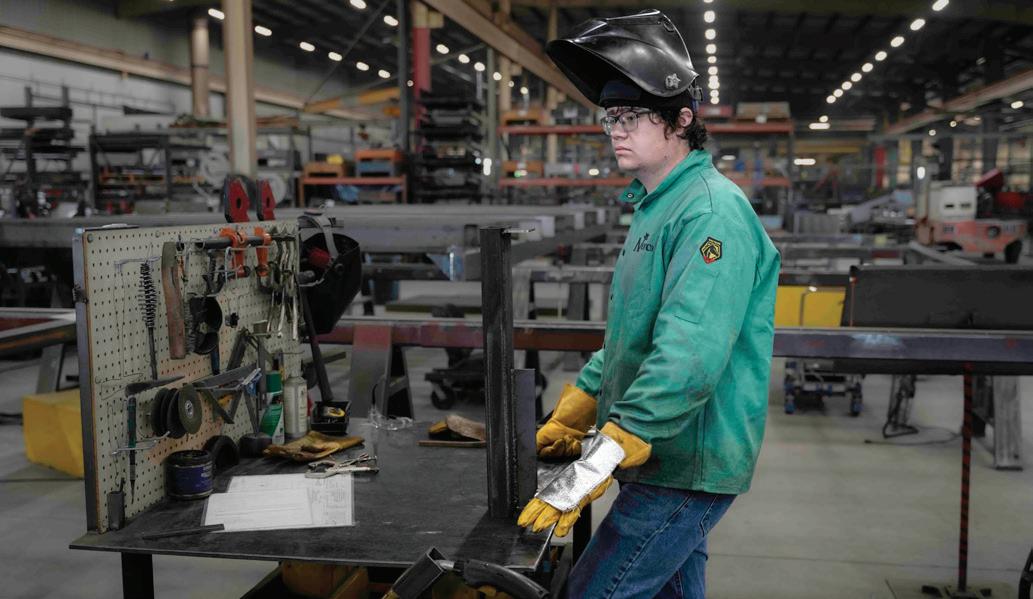

the summer. Chris Hug, a Madras High School graduate, is a machine operator at KEITH.
From his experience in high school manufacturing classes, Chris had a strong foundation to build upon during his internship.
“They taught us a whole lot about how to operate machines, better welding techniques, good electrical advice,” Chris says. “I knew I could definitely tackle a manufacturing career.”
Through career-connected programs, rural STEM hubs can build and inspire their workforces by allowing high school students to see a future for themselves in STEM careers.
“People are recognizing that there are many careers out there that are STEM that we didn’t see as STEM before,” says Erica
Compton, executive director of the Idaho STEM Ecosystem.
In rural Idaho, community-connected learning is flourishing in the education system.
“A trend that I’m seeing in students, especially in rural communities, is that beyond career-connected learning, what they’re really hungry for is communityconnected learning,” says Crispin Gravatt, communications manager at Idaho STEM Action Center. “They really are wanting to make sure that their communities are as evergreen as they can be. Parents want their students to feel like they can have a life in the communities that they love.”
In rural areas, community-centered approaches can show students they don’t
need to leave home to find better career opportunities.
As STEM education in rural communities propels students toward new horizons, the landscape of possibilities continues to expand. With strong support systems in place, students can transform their communities in more ways than they can dream of.
“What we’re focusing on at Oregon STEM and the STEM hubs is the awareness gap,” says Deb Mumm-Hill, Oregon STEM executive director. “First of all, you can’t envision and be what you can’t see. And the technology and the STEM industry—a lot of it is invisible. So, unless your parents, your school or your ZIP code can show you these invisible, amazing careers, you can’t dream to be them if you can’t see them.” n

on a
By Chiara Profenna
The Oregon Coast, with its rugged cliffs and abundant marine life, holds a special place in the hearts of locals and visitors. Yet, it's been missing a critical piece of its ecological puzzle for decades: the sea otter. Elakha Alliance, a dedicated advocacy group, wants to complete that puzzle.
Since 2018, the nonprofit has aspired to restore the sea otter population to the Oregon Coast through advocacy, scientific research and educational awareness.
The alliance’s history goes back about 20 years, when David Hatch questioned the return of sea otters. At the time, David was the Oregon Coast Indian Tribes’ representative on the Oregon Ocean Policy Advisory Council.
One of the council’s staff members was Bob Bailey, an employee at the Department of Land Conservation and Development. During their time on the council, David and Bob became acquainted through their mutual passion for coastal conservation. During one of their conversations, David mentioned sea otters.
“He had built a small boat,” Bob says. “And in the process of building that small boat, was looking for a name for it. He
ran across the word elakha, which in the Chinook trade jargon means sea otter. He ended up naming his little boat ‘The Elakha.’ But it also set him on a path toward understanding and coming to realize sea otters had once been part of the lives of Indigenous people all along the Oregon Coast and beyond.”
David began sharing information about sea otters and seeking ways to create change. Through tribal and non-Indigenous connections, he gathered resources to support his project.
“Dave was out spreading the gospel, as it were, about returning sea otters,” Bob says.
Many years later, in 2016, Bob recalled this encounter. He reached out to David to see what had become of the sea otters.
“I didn't hear back from him and came to find out some weeks later that he had died quite tragically and suddenly that particular week,” Bob says. “[It] was devastating, of course, to his friends and family and all of us.”
Not wanting David’s life’s work to die with him, Bob took up David's mission and formed Elakha Alliance.
The organization was incorporated in 2018. Since then, it has supported many steppingstones in the long and arduous path of species reintroduction.



Today, a notable 800-mile divide separates the sea otter populations of Northern Washington and Southern California—a gap that emerged more than a century ago. The near extinction of sea otters resulted from intensive hunting by fur traders in the 18th and 19th centuries.
While this important ecological marine mammal was lost to overhunting, the lives and culture of Indigenous people along the coast were also deeply affected.
Sea otters held a profound spiritual and cultural significance in the lives of these communities, as evidenced by archaeological findings and passed-down wisdom. Elakha Alliance, a collaboration among tribal, nonprofit and conservation leaders, strives to rekindle this cultural connection in partnership with Native coastal communities in Oregon. Its board of directors includes representation from these Native communities, including Robert Kentta, a member of the Confederated Tribes of Siletz Indians.
“Sea otters represent prosperity to us in our traditional stories,” Robert says. “That’s an important cultural connection we’re missing without sea otters being present here on the coast.”
For more than 5,000 years, sea otters
lived in harmony with humans along the Oregon Coast. Their extinction from the region holds a symbolic significance to Indigenous people.
“The history of the loss of sea otters coincided with the loss by Indigenous people of their homelands and way of life along the Oregon Coast,” Bob says.
In the 19th century, Indigenous communities were affected by numerous catastrophes. War, disease, loss of their lands and lives, and relentless persecution and stigmas plagued Native communities.
The restoration of sea otters to the coast is indicative of healing the relationships between Indigenous communities and the land, Bob says. While the tragedies of history cannot be reversed, Elakha Alliance hopes to bring balance back to the community and restore an integral piece of Native culture to the land.
“It would be cultural restoration in that ability to see our oceanscape as it once was, not all that long ago,” Robert says.
As a keystone species, sea otters would play a vital role in maintaining the health of coastal ecosystems if reintroduced. Their presence would affect coastal regions— directly and indirectly—in many ways.

A growing sea otter population would indirectly increase kelp forests, eelgrass beds and the species that rely on these habitats. Their feeding behaviors would likely lead to a decrease in a variety of prey species, such as Dungeness crab.
Elakha Alliance has taken positive and negative effects into account by conducting a variety of studies. A feasibility study, completed in 2020, found that restoring sea otters is biologically feasible.
“We had six world-renowned scientists work on the 200-plus page document,” says Jane Bacchieri, executive director of Elakha Alliance.
The study looked at the elements necessary for a sea otter population to be restored in Oregon. It included an in-depth analysis of ecology, habitat, genetics and other biological factors.
It also led to more studies on the socioeconomic impacts on fishing industries and tourism. These additional studies—the Oregon Sea Otter



Reintroduction Economic Study and the South Coast Tourism Impact Study—investigated some of the broader changes sea otters would make in coastal communities. Those changes could include a spike in tourism and a decrease in shellfish and crab that could be offset by an increase in finfish production.
“The coast belongs to everybody,” Jane says. “Our efforts are statewide; in some cases, beyond state boundaries.”
Using these studies, Elakha Alliance works with the U.S. Fish and Wildlife Service, which has the regulatory authority to bring back sea otters.
Blueprints for Restoration
Reintroducing sea otters to the Oregon Coast is a long and complicated process. However, with advocacy and support from Elakha Alliance, it is becoming more feasible each day.
The Elakha Alliance strategic plan
comprises four main steps. Its first initiative included the feasibility study and the following impact studies. At the same time, the alliance’s second step is working to build regional consensus that restoring sea otters is a goal worth pursuing.
The third step of the initiative is reintroducing sea otters along the Oregon Coast and monitoring their progress diligently. Initial work may begin in 2025, although it’s too early to gauge when sea otters will be fully reintroduced. Ongoing monitoring is expected to last for decades.
The last step is to strengthen the organization itself. Key strategies involve public involvement— especially from affected groups— and forming partnerships with organizations sharing the alliance’s vision. The group’s work will be far from over once its key mission is achieved.
“I think there’s going to be a role for Elakha to continue to serve as an advocate for the animals,” Jane says. “At the end of the day, if we’re successful, we might not need to exist as the Elakha Alliance anymore. It might be broader ocean stewardship or something like that. I think we will be flexible and nimble to be value-added wherever we can be.” n
Learn more about Elakha Alliance at elakhaalliance.org.

Reintroducing Keystone Species in the Pacific Northwest
Keystone species play a pivotal role in maintaining ecosystem balance. The Pacific Northwest has seen many successful reintroductions as well as more challenging cases.
In the mid-1990s, gray wolves were successfully reintroduced in Yellowstone National Park. Through careful planning and research, their presence led to a cascade of positive effects and increased biodiversity in the ecosystems. Elk and deer populations rebalanced, allowing willows and aspen to flourish.
In a less successful attempt, translocating sea otters from Alaska to the Oregon Coast in the 1970s became a lesson in the importance of monitoring populations after reintroduction. Not long after the sea otters were brought to Oregon, their population slowly dwindled until the coast was once again left without them.
Careful planning, consideration of ecological dynamics and consistent monitoring are some of the most crucial factors in a successful reintroduction.









Graham Cracker Picnic Mix
¼ cup vegetable oil
¼ cup sugar
5 to 6 drops pink neon liquid food color
½ cup unpopped popcorn kernels
1 package mini pastel marshmallows
1 cup bear-shaped graham crackers
1 package white fudge-covered pretzels
1 cup mini cookies
In a large pot over medium heat, stir oil, sugar and food coloring. Stir in the popcorn kernels. Cover. Cook until popcorn begins to pop. Shake pot over heat until popping slows.
Remove pan from heat. Pour popcorn into a large bowl. Add marshmallows, graham crackers, pretzels and cookies. Toss lightly.
8 cups popped popcorn
2 tablespoons raspberry jam
3 tablespoons smooth peanut butter
½ cup white chocolate chips
¼ cup freeze-dried strawberries
¼ cup dried cranberries
In a large bowl, stir together popcorn and jam until evenly coated. Transfer to a parchment paper-lined baking sheet. In a double boiler over barely simmering water, add peanut butter and white chocolate chips. Cook, stirring occasionally, for 3 to 5 minutes, or until smooth and melted.
Drizzle peanut butter mixture over the popcorn mixture. Sprinkle with strawberries and cranberries.
Refrigerate for 10 minutes or until the peanut butter mixture is set. Break into pieces to serve. Store in an airtight container in the refrigerator for up to one week.
6 quarts popped popcorn
Olive oil cooking spray
1 cup grated Parmesan cheese
2 teaspoons garlic salt
2 teaspoons paprika
1 tablespoon Italian seasoning
Place popcorn in a large, sealable plastic container or a 2½-gallon plastic sealable bag.
Spray popcorn lightly with cooking spray. Sprinkle cheese, garlic salt, paprika and Italian seasoning over popcorn. Shake to distribute evenly.
12 cups unsalted, unbuttered, popped popcorn
4 cups mini marshmallows
2 tablespoons butter or light olive oil
½ teaspoon salt
1 tablespoon green food coloring
¼ teaspoon peppermint extract
1 cup green candy-coated chocolate candies
Place popcorn in a large mixing bowl. In a saucepan over medium heat, melt marshmallows, butter and salt. Stir occasionally until smooth. Remove from heat. Stir in food coloring and peppermint extract.
Toss marshmallow mixture with popcorn. Cool for 2 to 3 minutes or until cool enough to handle. Toss with chocolate candies.
Shape 3 tablespoons of popcorn mixture into a small cluster. Place on a wax paper-lined baking sheet. Repeat with the remaining popcorn mixture. Cool completely.
¼ cup freeze-dried strawberries, ground
6 cups popped popcorn
1 cup white chocolate chips, melted
In a small food processor or spice grinder, pulse freezedried strawberries until finely ground.
Place popcorn in a large bowl. Drizzle melted chocolate over the top. Toss until well-coated. Sprinkle evenly with ground strawberries. Toss until well-coated.
Scrape popcorn onto a large parchment paper-lined baking sheet, spreading into an even layer.
Let stand at room temperature for 30 to 60 minutes, or until chocolate is set and hardened. To serve, break into pieces.
5 cups popped popcorn
12 ounces white chocolate chips or chopped white chocolate
1 cup crushed hard candy peppermints
Cover a baking sheet with foil or wax paper. Set aside. Place popcorn in a large bowl. Set aside.
In a double boiler over barely simmering water, melt chocolate, stirring until smooth. Stir in crushed peppermints.
Pour the chocolate mixture over the popcorn mixture. Stir to coat. Spread onto prepared sheet. Cool completely.
When chocolate is cooled and set, break into chunks for serving. Store in an airtight container at room temperature.
8 cups popped popcorn
½ cup chopped toasted pecans
1⁄3 cup maple syrup
1 tablespoon bourbon
2 tablespoons butter
1 tablespoon orange zest
1 dash bitters
Place popcorn and pecans in a large bowl.
In a small saucepan over medium-high heat, combine maple syrup, bourbon and butter. Bring to a boil. Cook, swirling pan, for 3 to 5 minutes or until mixture thickens to corn syrup consistency. Stir in orange zest and bitters.
Drizzle maple syrup mixture over popcorn. Toss to evenly coat. Cool completely before serving.
Options: Substitute bourbon with rye or whiskey. For mocktail popcorn, substitute with nonalcoholic bourbon or whiskey.
I am learning the technique of Swedish huck weaving and am having a difficult time trying to find huck weave materials in Alaska. If you have any huck weave materials that you would be interested in getting rid of, I would love to have them. Thank you.
Nancy Riley P.O. Box 57030 North Pole, AK 99705
I would appreciate unwanted jewelry—old, new or broken. Also, unmatched earrings and unwanted watches. Thank you.
Carol Semenko 145 Chukar Lane Alturas, CA 96101
I am requesting large—about 2 inches—wooden thread spools. A friend carves faces into them. Thank you.
Barbara Cadwell
950 Pomona St., Unit 228 The Dalles, OR 97058 bpcadwell228@gmail.com
I have a flat rate USPS box stuffed full of wool, yarn, needles and other knitting accessories that I would like to give away. If you are interested, contact me by email, and I will be happy to mail them to you free of charge.
Pat Sunday
7096 N.E. Stonewater St. Hillsboro, OR 97124-7282 suncia@icloud.com
My mother will be 94 years young in January. I know she would be happy to receive birthday cards. Mail to: Mary Ann Cline, 2221 Oak St., Apt. 329, Forest Grove, OR 97116. Thank you.
Carol Davis Vernonia, Oregon
My mother, Gail Simmons, turns 80 in January. She has been a nurse since I was a child, and she’s still a nurse in the same assisted living facility after more than 30 years. She is a very caring nurse for the elderly, ensuring her residents receive the best care possible while working through the pandemic. She is what you would expect in a nurse—always giving instead of receiving. If you asked her why she still works today, she would tell you it’s in her DNA and it’s what she lives for. I would love to see her face glowing with pride receiving birthday wishes and words of encouragement. Thank you for your letters and cards in advance. Send to: Gail Simmons, 1699 N. Terry St, Space 155, Eugene, OR 97402.
Robert Shafer Heppner, Oregon
Have a Happy New Year!
My dear friend turns 91 in January. She is a retired school teacher with a strong sense of humor and amazing stories to share. Her birthday would be so special if you could send cards. Thank you in advance. Send to: F. Hart c/o 46383 Brahman Way, Pendleton, OR 97801.
Sandra Pendleton, Oregon
Looking for images and stories of Oregon Army and Navy airfields directly before and during World War II that were used by the military. Will pay postage and return images. Needed for academic research.
Andi Journey P.O. Box 226 Crescent, OR 97733
If anyone is interested in metal pull tabs off cans, we have bags that can be sent to you. Contact me, and I’ll get them on the way.
Peggy Timms 19 Cedar Drive Hermiston, OR 97838
North Powder Charter School is accepting donations of new or used playing cards and dice. These will be used to create math games for students and their families. Items can be mailed or delivered before March 1 to: NPCS, 333 G St., North Powder, OR 97867.
Allie Scott North Powder, Oregon
Send your request (no attachments) to readerexchange@ ruralite.org or mail to Reader Exchange, 5625 NE Elam Young Parkway, Suite 100, Hillsboro, OR 97124. Fill in the subject line with Reader Exchange.
Acceptance, scheduling and editing are at the editor’s discretion. Single requests only, please. No duplicates.
Submissions are handled first-come, first-served as space allows. We cannot honor every request.
Please affirm you have authorization from all appropriate parties before submitting. By submitting, you indemnify Reader Exchange, Pioneer Utility Resources Inc., its officers, directors, employees, utility clients and insurers from all legal liability incurred by the publication of information.
We no longer accept pen pal requests. You may submit a pen pal request as a Marketplace ad (pricing applies).
When submitting a milestone request, please send it at least two months before the milestone.
Phone numbers are not published. Email addresses are if part of the ad, but you must include a postal address.
Requests must include the name and address of the electric utility that provides your magazine.




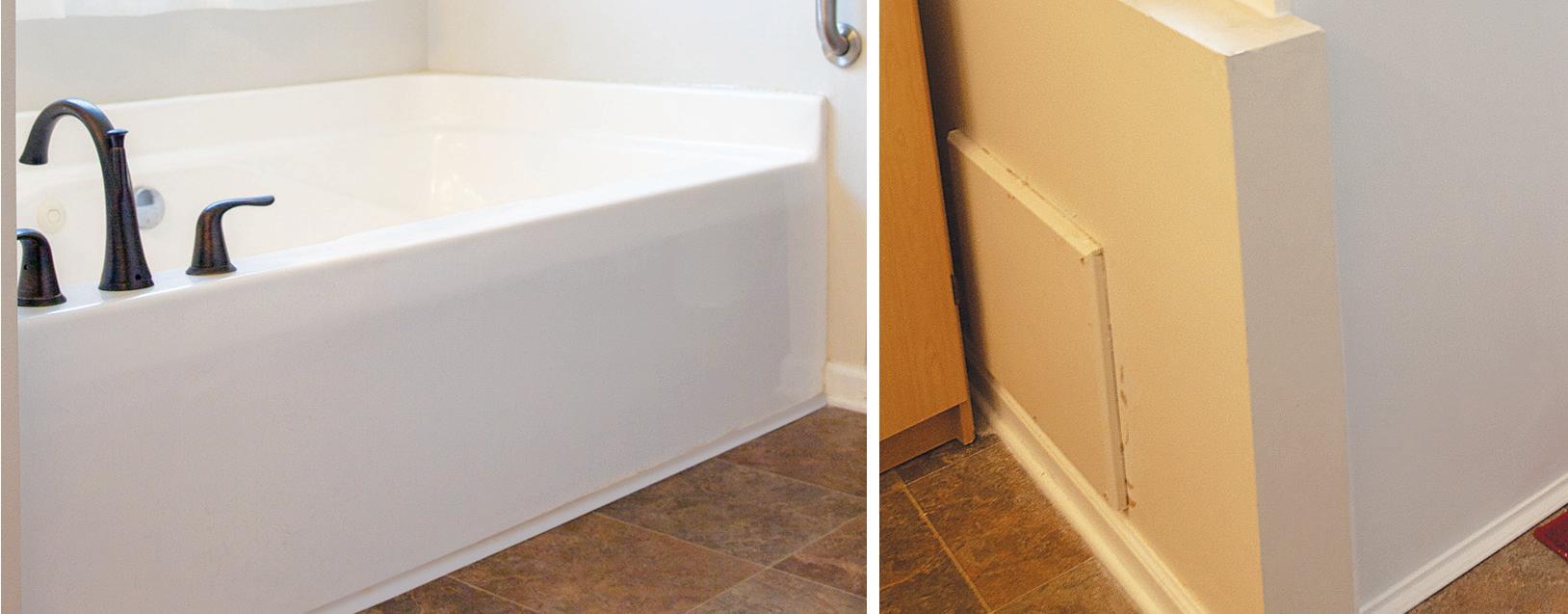




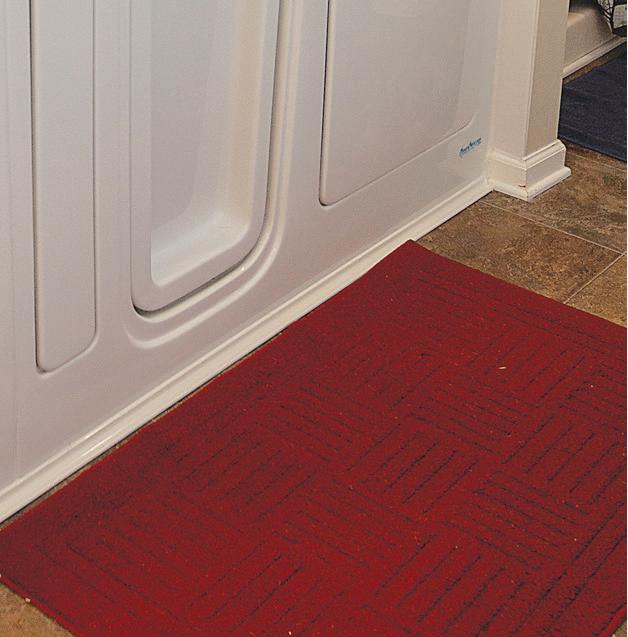








Hop into history at the Hagerman Fossil Beds in Southern Idaho, and experience one of the world’s largest fossil deposits from the Pliocene epoch—roughly 3 to 5 million years ago.
In 1928, a local rancher named Elmer Cook saw fossil deposits eroding along the Snake River. He contacted the United States Geological Survey, which in turn notified the Smithsonian Institution. The Smithsonian conducted four expeditions between 1929 and 1934.
The Smithsonian digs unearthed more than 200 fossils of Equus simplicidens, a predecessor of horses, that more closely resembled zebras. Finding so many fossils together helped researchers realize these horses were likely pack animals. The digs also found previously unfound species such as Platygonus pearcei, an early javelina.
The Thousand Springs Visitor Center opened in 2022, and is a great place to learn about a century of research at the site. The center has exhibits featuring fossils and the knowledge gained at the site, as well as ranger talks to guide visitors through the information.
Until March, the visitor center is open 9 a.m. to 3 p.m. Friday through Sunday. To plan your trip, call 208-933-4105 or visit www.nps.gov/hafo.

On any outdoor adventure, Mother Nature’s job is to present you with challenges. Some days she’s more demanding than others. And on those days, you’d better come prepared. The Stauer Survival Box is a near-guarantee you’ll be up to the challenge. The stainless steel multitool offers wire cutters, knife, bottle opener, file, a set of screwdrivers, a pair of pliers and much more. The powerful flashlight has three different settings, and the tactical loop watch is a reliable, waterresistant timepiece that clips to your hip and never leaves your side. All told, opening the Survival Box gives you instant access to nine different tools for JUST $19.50.
Regularly sold for $99, we’re offering this collection of survival essentials to you for A FIFTH OF THE NORMAL PRICE! Why? Because we’ve had an incredible year and we feel like giving back to our valued customers. As this kit has proven to be one of our all-time best sellers, we can only extend this offer while supplies last. Of our initial run of 1,737, more than half have already sold. Your move, Mother Nature.
Survival Box Specifications:
• Multitool: 3 1/4" x 1" folded
• Flashlight: 3 1/2" x 1", 260 lumens, takes AA batteries (not included), three LED light modes: strong, medium and caution flashing
• Watch: 2 3/4" x 1", battery type SR626SW (included)
Survival Box $99 $19.50* + S+P Save $79.50
*You must use Insider Offer Code: SVB185-01 to get this price. California residents please call regarding Proposition 65 regulations before purchasing this product.
1-800-333-2045
Your Insider Offer Code: SVB185-01

Regularly priced at $99, take advantage of this special offer while supplies last!
Praise for Stauer’s Survival Box “[It] has everything!” — Carol T., Anaheim, CA
Box includes flashlight, watch and multitool with wire cutters, knife, bottle opener, file, screwdrivers, pliers and more!

My heart is heavy.
One of the true blessings of writing a column is the opportunity to share with you, my readers, not only what I see but what is on my heart. The two are often interconnected. As trite as it sounds, I feel like we are family.
In the wake of the most recent war atrocities, it’s challenging to keep my attention on things like photography and positive storytelling. Yet, even as I wade through the

emotions of these conflicts, I am reminded what a lifelong gift photography is, distracting me from deep and painful events while acting as a vehicle to share what I see and feel. For this, I am forever grateful.
Armed with a purpose, photography has always been a powerful communication tool. With it, we can shine light in dark places or quietly applaud acts of love and goodness. I believe both are necessary. While I truly admire the courage of my friends who risk their lives to show us the injustices and atrocities of war, I have chosen to celebrate light and those who reflect it.
Where there is light, there is hope. The new year is the perfect time to talk about seeing and being light. Whether
literal or metaphoric, light reveals and heals. Each of us chooses how we use light. With our cameras, as with our words, we can choose to focus on the good and lovely in our world or dwell on the dark, ugly and evil.
I attended a seminar where the speaker reminded his audience of the difference between a thermometer and a thermostat. One reads the temperature, and the other changes it, he challenged.
The late Agnes Baker Pilgrim—also known as Grandma Aggie, a Native American spiritual elder I wrote about a few years ago— said she talked to water, thanking it often. She insisted water hears us. I think light is similar. I know it has a voice. n
Show me the goodness of light, as it falls on mountains, fields, streams, rooftops, bedsheets or kitchen sinks. Or, as it springs forth from the heart in acts of kindness.
Email your best image (just one, please) with caption information, including an explanation of how it affects you, to GPH@pur.coop. We may share submissions on our website and social media channels.

























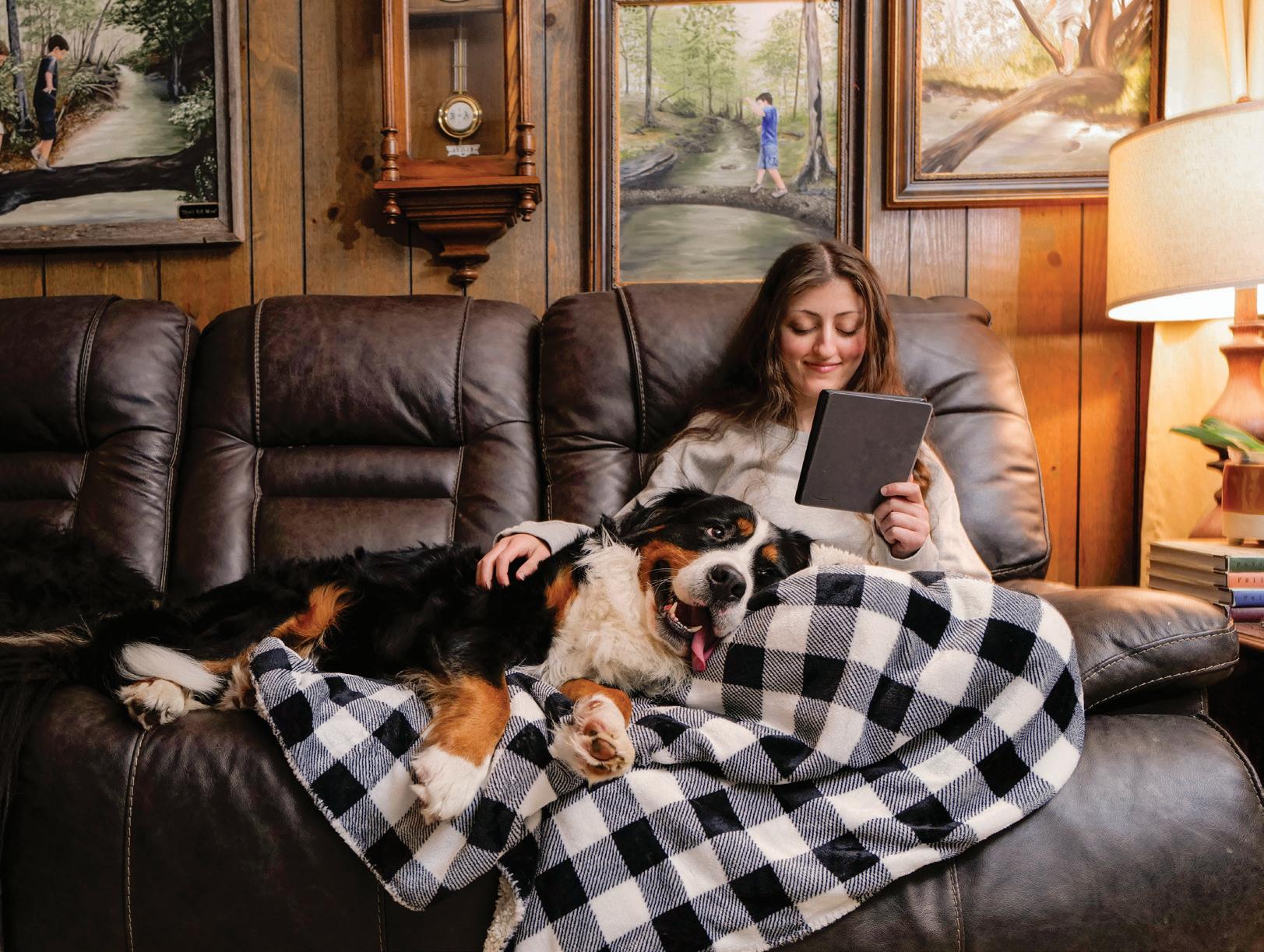
By Miranda Boutelle
Q: How do I lower my winter energy bills?
A: Winter and cold weather can increase energy use and bills. Heating accounts for the highest wintertime energy consumption in most homes. The amount of energy used to heat your home depends on your equipment, how you use it and the efficiency of your home’s shell—the building components that separate the indoors from the outdoors.
It’s important to know how your home is heated so you can make informed decisions on your energy use. A forced-air furnace is the most common type of heating system and is fueled by natural gas, propane, oil or electricity. Heat pumps are growing in popularity and are available for forced-air systems. If you have a forced-air system, check the filter regularly and replace it when it’s dirty. Ductless heat pumps—also known as mini-splits—boilers, radiant heat, baseboard heaters and electric resistance heaters are other common heating system types.
If you don’t know what type of system you have, find the model number of your equipment and look it up online.
You’ll find information about the kind of system, how efficiently it operates and recommendations for servicing it, which can improve system efficiency.
We use energy to make our homes comfortable. The easiest and lowest-cost way to save money on heating is to keep your thermostat as low as your comfort allows The closer your home’s temperature is to the outdoor temperature, the less energy is used.
The U.S. Department of Energy recommends a thermostat setting of 68 degrees in the winter while you are awake and lower when you are asleep or away from home. Keep in mind that setting the temperature too low can cause pipes to freeze or create moisture issues in some geographic locations.
Wearing an additional layer, slippers or a hat can keep you comfortable.
Do you use electric resistance space heaters to heat a room or section of a home? If so, you may see an increase on your electric bill. For example, let’s say you use a 1,500-watt electric space heater to warm your living room while you watch TV or read a book. Operating that space heater for two hours a day at the U.S.
The easiest and lowest-cost way to save money on heating is to keep your thermostat as low as your comfort allows. Adding an extra layer, slippers or a lap dog can keep you comfortable. PHOTO BY
MARK GILLILAND
average electricity rate of about 16 cents per kilowatt-hour costs about $15 a month. Operating that same space heater for 12 hours a day costs you about $90 a month.
If you choose to use space heaters, use them safely. Keep them at least 3 feet from anything flammable, do not leave them unattended, and plug them directly into the outlet, not an extension cord or power strip.
Just as we put on a windbreaker to keep cold wind from blowing through a sweater, your home also benefits from blocking air movement. Air sealing can make a big improvement in the comfort of your home as well as provide energy savings. A common air-sealing practice is applying weatherstripping to exterior doors and windows. You can also seal around plumbing penetrations to help eliminate drafts. A gap often exists between the drywall or wood and the plumbing pipes and drains. Filling these gaps with expanding foam can reduce drafts in bathrooms and kitchens.
Cold, windy winter days are the perfect time to find opportunities for air sealing. Rattling doors or moving curtains can indicate air leakage. Air leakage can occur where two different materials come together, like drywall and trim work. Cracked plaster and gaps in drywall can also cause drafts. Sealing the gaps saves energy and improves comfort.
As the temperature outside dips, take steps to maintain comfort in your home and keep your energy bill in check. n
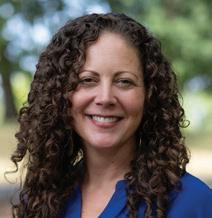
Miranda Boutelle has more than 20 years of experience helping people save energy. She has worked on energyefficiency projects from the Midwest to the West Coast. Today, Miranda is chief operating officer at Efficiency Services Group in Oregon, a cooperatively owned energy-efficiency company.
This content was originally created by Efficiency Services Group LLC under contract with NRECA. NRECA retains ownership of this content. NRECA does not endorse Efficiency Services Group, its views herein expressed, nor any products or services it offers.
Reinforced custom-sized pond liners (39 cents/sqft). Hay covers, greenhouse covers, any width and length. Truck tarps and more. High puncture and tear strength. Best price guaranteed. Celebrating 42 years in business. www.btlliners.com. 541-447-0712. 0424
4x5 round bales, Meadow Foxtail Orchard Grass. 4x4 Timothy, small square. 208-4354637 or 208-435-4002; nas@cpcinternet.com.
Wade Rain 40’x3” irrigation pipe. Used in solid set operation, in good condition. 541-752-0460; westernaglands@gmail.com. 0124
Buying antiques and collectibles: advertising signs, porcelain signs, gas pumps, beer signs, antique toys, cast-iron coin banks, neon signs and more. Jason, 503-310-3321 or tjabaughman@yahoo.com. 0324
Melodeon circa 1867 Taylor & Farley made in Worcester, MA. Mahogany case, good condition, playable. Circular stool. Photos available. Gale, 360-468-4618 or lynch@rockisland.com. 0124
Buying American Indian collectibles, Navajo blankets and rugs, baskets, beadwork, etc. Also, quality paintings of the early Southwest and Americas. Send photos or contact: 760-409-3117 or amer.ind.baskets@gmail.com.
Lifetime collection Fender vintage amps 1960s70s. Serious inquiries only. 541-589-2807.
Automotive
Wanted: mid-1960s 2-door Ford Falcon, Fairland or Mercury Comet/Cyclone. Grandkids have outgrown my ‘66 Ranchero, need something with a back seat. Dan, 541-663-9091. 0224
Boats
1979 Skipjack. 20-ft open cruiser. $10K. High top, stern cover, full boat cover. 305 Chevy engine depth finder and plotter; CB/VHF radio, OMC out-drive. Always garaged. Runs good. Photos available. Ontheroad4me@gmx.com.
Books, Magazines, Videos
Book restoration. Bibles, cookbooks, cherished family heirlooms. Beautiful work. We give renewed life, more durable than original, to last for generations. 775-537-7066; salacanstudio@gmail.com. 0124AR
Business Opportunities
A great business opportunity in Boardman, OR. A small cafe you can use your imagination in. Frontage view of freeway, quick in and out access. A coffee shop on property for extra income. $1.3M. For more information, contact Karen at 541-571-0636. 0124
Ads 25 words or fewer are $35 a month. An extended ad of up to 35 words is $50 a month. Contact information is included in the word count. Phone numbers and emails count as one word.
Longer ads may be placed. Contact 503-357-2105 or info@pioneer.coop for pricing information.
Ads are for customers of member co-ops, public utility districts and municipals only. Subscribers and nonmembers may inquire about pricing at 503-357-2105 or info@pioneer.coop.
Ads must be direct and in first person, and are subject to approval and editing.
Closing deadlines (in our office): March issue—January 28, 2024.
If submitting ad by mail, send appropriate payment with your name, address, email, phone number and the name of the electric utility that provides your magazine to: Marketplace, P.O. Box 1306, North Plains, OR 97133. Make check or money order payable to Ruralite.
We accept credit card payments for ads submitted by email. Send ad to info@pioneer.coop.
Call 503-357-2105 to pay by credit card.
Advertisements are accepted in good faith. Pioneer Utility Resources is not liable for interactions between buyers and sellers.
Quaint hardware store in Maupin, OR, for sale. Inventory and interior store recently updated and refreshed. See ad on Bizbuysell.com or email Maupincountrystore@gmail.com. $309K.
Looking to purchase small business in Northern Idaho. Call or send information on any opportunities. Can do a quick purchase. 559-269-5554; mike@rouchbuilders.com. 0124
Community Events
8th Annual Fiber Arts & Jewelry Exhibit Feb. 2March 30, 2024. Art Center East in La Grande, OR. Submission deadline: Jan. 27, 2024. artcentereast.org. 0124
Farm Equipment
For sale: Steffen model 5510. Hay handler grabs 10-12 small bales. Good condition. $1K. Challis, ID. 208-879-2939. 0124
Free Items
Free materials—church, government uniting, suppressing “religious liberty,” enforcing National Sunday Law. Be informed. Need mailing address only. TBS, P.O. Box 374, Ellijay, GA 30540. 888-211-1715; tbsmads@yahoo.com. 0124AR
Miscellaneous
Alaskan yellow cedar. Great for planter boxes, herb and flower beds, fencing or decks. Various sizes available. Pete, 541-206-0727. Lisa, 541-747-5025 ext. 21. 0624
Local commercial fisherman sells summer catch of preserved freshness by blast freezing at sea, gourmet canned tuna on internet. Sept.June. 100% guaranteed the best canned tuna you ever tasted. Original, jalapeno and garlic flavors available. Twofisherstuna.com. Call 206-799-1082 to place your order. 0324
Custom handmade knives. Now taking orders for hunters, chefs, buoy or utility. Damascus or 1095 high-carbon steel guaranteed. Call or text 509-250-2662. Pictures available. 0124
Granite cemetery markers at affordable prices. Will ship to most places. For more info: Joe, 541-815-8906; www.highdesertmemorials.com; and highdesertmemorials@gmail.com. 0524
Get the absolute best farm dog. English shepherds are good with all stock, are great watchdogs, superb varmint hunters, friendly and easy to train. Our litter was born Dec. 4, and our pups will be ready for their forever homes just in time for Valentine’s Day. $900 each. Applications are available at www.goodearthfarm.org. 541-913-5980; admin@goodearthfarm.org. 0224
Idaho shag (border collie x Airedale) The best dog you will ever have. Farm/ranch dog. Males and females. $450 each. Colton, OR. 971-804-1706. 0124
Chenoa, female, 3-year-old Great Pyrenees. Needs a new home with space. 541-805-0969 or bcrp51@outlook.com. 0124
Stud service for mini Australian shepherd. Photos available. Crescent Lake, OR. Liz Sanders, 360-901-1291. 0124
Real Estate
$600K interior Alaskan turnkey roadhouse and 2 dry cabins. Well-maintained on 5 acres with pond. 50 scenic miles south to Denali Park entrance. 907-460-9292. 0524
Let me help you buy or sell ranch, farm and recreation property in Oregon. Fourthgeneration Oregonian, ranch owner. For sale: Sisters, OR, 40 acres. $1.7M. John Gill, 541-480-9161 or johngill@landandwildlife.com. Land And Wildlife brokerage. 0124
Dale store. 11 acres along U.S. Hwy 395. Live and work in this recreational enthusiast area. $695K. Duke Warner Realty, 541-987-2363 or ddwr@ortelco.net. 0124
Off-grid homestead. Ideal for wind/solar power. NE Elko County NV. Has equipment, quarters, shop. Year-round access. Water and power nearby. $35K. geopup58@gmail.com. 0124
Rest in peace among the pines. Two adjacent gravesites in the historic Sumpter cemetery in Northeast OR. A beautiful, peaceful setting. $300. 208-284-5073. 0124
Selling farmette, snowbird potential. Enclosed RV trailer port, garages, power, propane, fenced, county, near Joshua Tree. 58873 Sun Mesa Drive, Yucca Valley, CA. Cindymarkrealty.com/copy-of-houses. 760-285-4911. 0124
Recreational Rentals
Wavecatcher: Oceanfront. Central Oregon coast. Summer $175/night mid-May to midOct.; $140/night mid-Oct. to mid-May (plus cleaning/tax). Three rooms w/double beds. Pets welcome. Wavecatcherbeachrentals.com. Reservations: 541-740-2846. 0324AR
Bend country cabin. Very clean and fully furnished cabin on private ranch. Close to recreation areas. Very nice. $95/night. 541-382-3050; bendcountrycabins@gmail.com. 0124
Rare 1.34-acre, view lot for cabin/retreat in Mt. Aire Canyon, 4 minutes from Salt Lake City 270º views, elevation 7,200 at confluence of 5 canyons. Water onsite, transformer adjacent. $325K. charles@cc-tdi.org, Instagram: @mtairekitebox, 801-232-8038. 0224
Recreational Vehicle
Hook up a steelhead at The Hook Up RV Park in Ahsahka, ID. Daily or longer rents available. 208-391-2919; hookuprvpark@gmail.com. 0124
Call Pahrump Lock and Safe for all your residential, commercial and safe services. 24-hour emergency service in Pahrump, NV. 702-379-8441; Jim@pahrumplockandsafe.com.
We all want delicious, fresh, nourishing food to feed our families. We’ve got pastured pork corn/soy/GMO free. Delivery to your door or drop sites. Order at: www.rural-roots-ranch. com or text Christy, 541-589-4674. 0624
Holistic nurse consultant. Herbal/natural nutritional advice. Complementary medicine practitioner. Free initial consultation. Available in Brookings, OR, area only. 707-951-1882.
Buying American Indian collectibles, Navajo blankets and rugs, baskets, beadwork, etc. Also, quality paintings of the early Southwest and Americas. Send photos or contact: 760-409-3117 or amer.ind.baskets@gmail.com.
Gold, silver, coins/currency, buy, sell. Collections wanted. Fair prices paid. 44 years in retail store. Baker City, OR. 800-556-2133; garrymclin@aol.com. 1024
Old carpenter tools, planes (wood/metal), levels, chisels, slicks, adzes, axes, hatchets, handsaws, old rulers, spoke shaves, wrenches, shipwright tools, old tool chests. 503-659-0009 or 971-666-0659. 0124



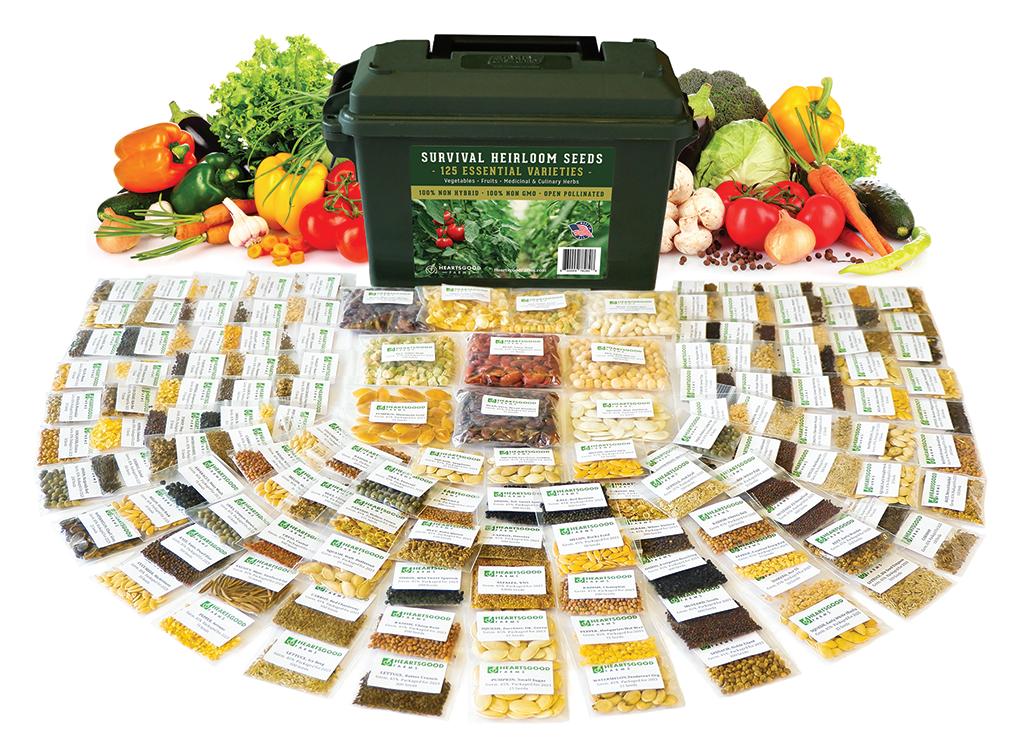
We’ve had a busy year at HIGH PLAINS SHEEPSKIN, making and shipping thousands of these great slippers to people in all 50 states. Our durable hard sole sheepskin slippers are now $75.00, sheepskin soled $65.00. Sales price February 1st through February 29th only. Sizes and colors may be limited. Shipping rates apply (call to inquire if ordering by mail).


P.O.

reliability, safety and lower costs
home with an upgraded electrical panel
By Jennah Denney
Every home has an electrical panel, otherwise known as a breaker box. The design hasn’t changed much over the years, but the smart technology-enabled electrical panel is innovating this household appliance.
Smart breaker boxes—which can operate on their own or in conjunction with a standard electrical panel—are an alternative for households looking to save energy.
Upgrading to smart breaker boxes can make people’s home electrical systems safer and more reliable. It’s recommended to hire a qualified electrician to install the smart panel, which can be done using a home’s existing electrical wiring and infrastructure.
Many smart breaker boxes are designed to easily connect to other smart devices in your home. With the capacity to remotely monitor and adjust energy consumption, these devices provide several advantages that make them a worthwhile investment for anyone looking to consume less energy.
One advantage smart breaker boxes provide is convenience for homeowners to monitor and control how much energy they use.
With smart circuit breakers, you can receive real-time data that allows you to pinpoint appliances or devices that consume excessive energy. This real-time tracking allows consumers to adjust their energy use where needed, which ultimately saves money on monthly energy bills, reduces energy waste and is good for the electric grid.
Smart breaker boxes are all about managing your electric load. While the technology to track how much energy a home uses has been available for years, the ability to control how that energy is used is new. A smart breaker box can reveal how much power each circuit is using and turn each one on or off.
Some smart breaker boxes allow you to establish schedules based on importance, such as refrigeration and heat to be on 24/7, but less important loads like Wi-Fi or the television to turn off during scheduled times when no one is home.
Smart breaker boxes offer additional benefits for those with home solar systems. Smart breaker boxes help solar energy systems run more efficiently by determining how much energy is being used and how it can be stored. Through intelligent load management, they can provide longer battery backup life for those with energy storage.
Additionally, integration with other smart home devices, like thermostats and virtual assistants, further enhances the connected-home ecosystem.
Safety in electrical devices is highly important to consumers, and smart breaker boxes provide enhanced safety features that consumers appreciate. Smart breaker boxes can identify abnormalities
With

and other potential electrical problems, then quickly shut off power supply if a circuit shorts or becomes overloaded, avoiding electrical fires and other dangers. Many smart breaker boxes include surge protection to help protect against power spikes and other issues.
Smart breaker boxes aren’t just for consumers—electric utilities are using them, too. A primary advantage of these devices is that they allow for more efficient and reliable energy distribution. With the ability to detect faults within the system, electric utilities can quickly respond to issues and minimize outage times for consumers—ultimately managing the grid more efficiently.
There’s no denying smart home technologies have changed how we manage homes, and smart breaker boxes are no exception. Smart breaker boxes help electric consumers and utilities in multiple ways.
With advanced safety features, realtime energy tracking and control, and the ability to use energy more efficiently, these devices are a smart investment for anyone who wants to make their home’s system more reliable, safer and costeffective. n

When adding new
replace the default
By Michael Leitman
Once pursued by only the most tech savvy of consumers, smart home technologies are becoming increasingly common to enhance home convenience, comfort and safety.
Smart technologies have proliferated as the “internet of things” have grown to include home security and safety systems, lighting, entertainment, HVAC systems and appliances.
Consumers are interested in a variety of technology combinations and uses for their homes. Regardless of the applications, here are three key tips to keep in mind when integrating smart technologies into your home.
X Ensure devices can communicate with each other. This might seem like a no-brainer, but compatibility is vital to ensuring convenience is not overcome by annoyance. One way of ensuring compatibility is choosing a single brand for as many applications as possible. Another option is a central hub to coordinate and control various devices. Many of the hubs available today offer additional features as well, including speakers, routers or displays.
One major consideration for all these technologies is a fast and reliable internet and Wi-Fi connection.
X Enable all security measures to prevent hacking. Adding smart devices to your home can increase the surface area that bad actors can use to hack equipment, increasing the importance of cybersecurity measures. Reduce risks by choosing smart devices with built-in security features and ensuring these features are all turned on. It is also important to replace default usernames and passwords with strong unique versions, enabling dual and/or biometric authentication, and running software updates when available.
If you are controlling your home devices from your phone, tablet or laptop, do not do so while using unsecured public Wi-Fi networks.
X Look for technologies to help control and manage home energy use. Smart home technologies can be a great way to control and manage home energy use. If you are looking into home automation, devices like smart thermostats, grid controllable water heaters, and schedulable or motion-controlled indoor and outdoor lighting can be smart ways to save money on your electric bill.
When used wisely and efficiently, smart home technologies can add great convenience to everyday life. Keep these tips in mind as you integrate smart devices into your home.


Amemorable
beach moment: You’re basking in the warm sun, toes in the sand, letting the gentle turn of the foam-capped waves lull you into a state of complete relaxation. As your eyes scan the endless horizon of blue on blue, you’re rewarded with a pod of dolphins making their way across the sea.


There’s no denying their signature shape as they leap from the water. If you don’t see anything else extraordinary the rest of day, you can take solace knowing you’ve witnessed one of nature’s most playful and human-like creatures in their natural habitat.


Why not re-create that special moment with our Balinese Dolphin Pendant? We’ve captured two dolphins midjump in sterling silver crafted in the Balinese style. Tucked between these beloved sea mammals is a full carat of shimmering blue topaz. Made by some of Indonesia’s finest artisans, this pendant is an absolute steal at JUST $29! That’s what we call our Stauer IMPOSSIBLE PRICE!
Nothing captures the shimmering color of the ocean in the midday sun like blue topaz. With its sparkling, clear blue color and high reflective index, blue topaz is one of the world’s top-selling gemstones. The Gemological Institute of America lauds topaz for its hardness, noting that blue topaz is known for its intense color that’s better than aquamarine. With this special price, you can score quite the catch.

Satisfaction guaranteed or your money back. Enjoy the Balinese Dolphin Pendant for 30 days. If it doesn’t pass the test swimmingly, send it back for a full refund of the item price.
Limited reserves. This pendant is already one of our best sellers this year. A full carat of genuine blue topaz set in .925 sterling silver for this price is as rare as a dolphin sighting. We cannot guarantee availability for long. Call today! This offer is limited to the first 1,900 responders to this ad!
Jewelry Specifications:
• Made in Indonesia
• Blue topaz and .925 sterling silver

Balinese Dolphin Pendant (1 carat) $299 $29* + S&P Save $270
*Special price only for customers using the offer code.



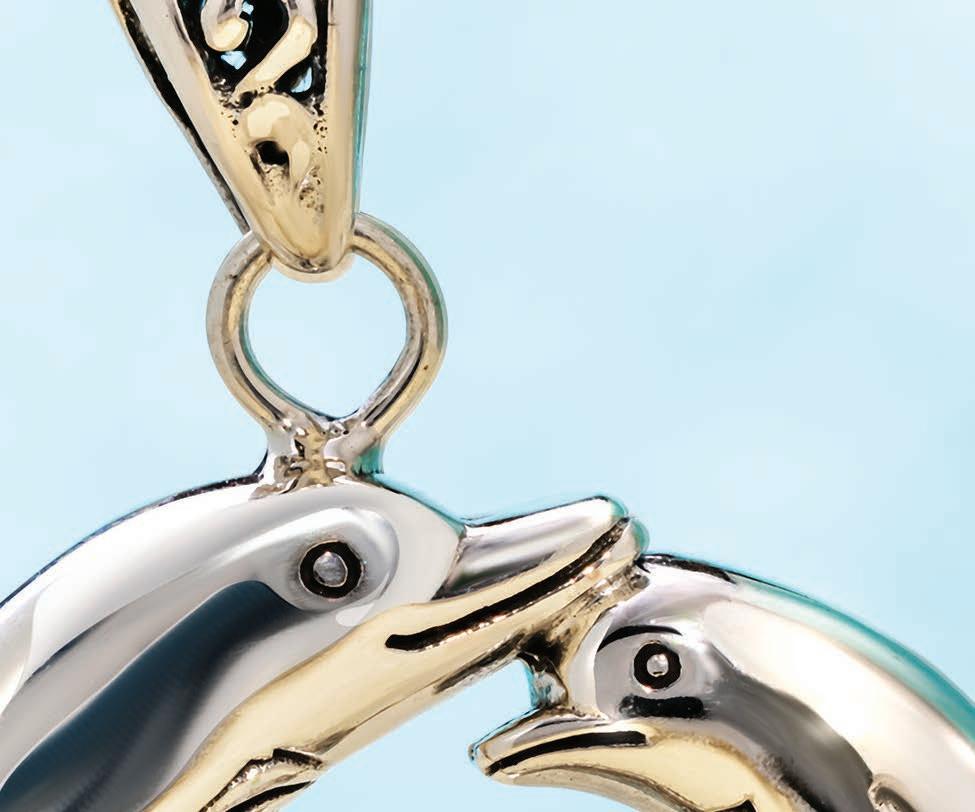



One carat of shimmering blue topaz set in sterling silver for $29
What Stauer Clients Are Saying About Our Topaz

“Just lovely! Would recommend it as a purchase. Thank you STAUER.” — Mary L.




Stairlifts were introduced in the 1920s, and not much has changed since. A stairlift has one use: to move you (and only you) between �loors, slowly. And it �its in only one place: your staircase. Finally, a stairlift won’t keep up with you as your mobility needs change over time. For example, a stairlift can’t carry a walker or wheelchair.
A Stiltz Homelift, on the other hand, is an affordable, modern Homelift that is so compact, it �its just about anywhere in your house. It requires no special machine room, no supporting walls, and runs off a standard home electrical outlet. One look at our unique freestanding rail system, and
you can tell right away why we’re called “Stiltz”!
A Stiltz Homelift is 100% safe. The homelift will not operate when the door is open, and sensors stop the lift cab if something is in the way. A battery backup lowers the lift cab in a power outage.
A Stiltz Homelift is versatile. Our homelifts carry two people, or even a wheelchair. And the small footprint means they �it just about anywhere. Install your homelift through the �loor, in a stairwell, up to a landing — even inside a closet!
A Stiltz Homelift is clean and quiet. Our self-contained electric drive system is very quiet. No messy hydraulics, no noisy vacuum systems, no machine rooms required.
A Stiltz Homelift is an extra pair of hands. Move laundry, suitcases, groceries and vacuum cleaners — up and down between �loors.
Some Stiltz customers need a Homelift immediately. But others want to “future-proof” their homes for when the stairs become a challenge.

“I can’t imagine what we’d do without it. I

we had installed our Stiltz Homelift several years ago!” – Mr. James, Roanoke VA



Falls are the leading cause of hospitalization for older adults in the US. More than a quarter of Americans age 65+ fall each year. The average hospital cost for a fall injury is $35,000. Did
Stiltz is one of the world’s leading Homelift manufacturers, so you’ll be in good hands. Your homelift will be installed and maintained by Stiltz trained professionals — expert technicians who truly care about your freedom.
• Affordable
• Small Footprint
• Full Safety Features
• Clean, Quiet Operation
• Low Power Consumption
• Freestanding Design
• Wheelchair Accessible
• Carry Laundry or Pets
• Fast Installation
• Full Warranty





65 S. Roop St.
Susanville, CA 96130
Phone: 530-257-4174
Fax: 530-257-2558
www.lmud.org
Board of directors
Fred Nagel, President
H.W. “Bud” Bowden, Vice President
David Ernaga, Treasurer
Daren Hagata
Jess Urionaguena
staff
Electric Operations Manager
Cort Cortez
Business Manager
Nick Dominguez
Administrative Services Manager
Karen Rollings
Public Relations Manager
Theresa Phillips
Accounting and Finance Manager
Catherine Schroeder
Customer Service Manager
Christina M. Nystrom
IT Manager
Thomas Plummer
In case of an outage: If your electricity is off for more than a few minutes, call 530-257-4174. Office hours are 8:30 a.m. to 4:30 p.m. Monday through Friday. Outside of normal business hours, calls are monitored by our answering service and forwarded to the appropriate LMUD personnel.
The board meets at 5:30 p.m. the fourth Tuesday of each month.

Lassen Municipal Utility District extends warm greetings and heartfelt wishes to our community. May the year ahead be filled with prosperity and happiness. We remain committed to providing the energy that illuminates your life.
Here's to a bright and promising year ahead.
Happy New Year from all of us at LMUD!